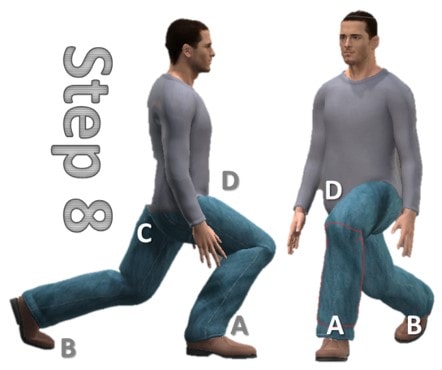Ankle and Knee Pain: The Knee Bones Connected to the Ankle Bone
Are ankle and knee pain linked? The fact that problems with ankle motion can cause knee issues suggested a new study. This concept has been a mainstay of modern podiatry and countless physical therapy and chiropractic disciplines. This study measured the range of ankle dorsiflexion (moving the foot up) and extension at the knee in 17 patients. The concept being that if the patient lacked dorsiflexion at the ankle, the knee would respond by having to hyper-extend to lock itself. The study did find more knee hyper-extension in those patients with ankle dorsiflexion limitations. The upshot? If you have knee pain, check how far your ankle can dorsiflex (see below) versus the other side (hopefully normal) side. This illustration is from our book Orthopedics 2.0 in the Symmetry Self-test section (see that chapter for more details). If you lack dorsiflexion on one side, your PCL ligament and anterior meniscus would be most at risk, as these are the structures that would take the brunt of the forces from a stiff ankle joint. You might discover that your ankle and knee pain are related.
Learn More About Regenexx® Procedures
We do not sell, or share your information to third party vendors. By submitting the form you agree that you've read and consent to our Privacy Policy.

Chris Centeno, MD is a specialist in regenerative medicine and the new field of Interventional Orthopedics. Centeno pioneered orthopedic stem cell procedures in 2005 and is responsible for a large amount of the published research on stem cell use for orthopedic applications. View Profile
If you have questions or comments about this blog post, please email us at [email protected]
NOTE: This blog post provides general information to help the reader better understand regenerative medicine, musculoskeletal health, and related subjects. All content provided in this blog, website, or any linked materials, including text, graphics, images, patient profiles, outcomes, and information, are not intended and should not be considered or used as a substitute for medical advice, diagnosis, or treatment. Please always consult with a professional and certified healthcare provider to discuss if a treatment is right for you.

